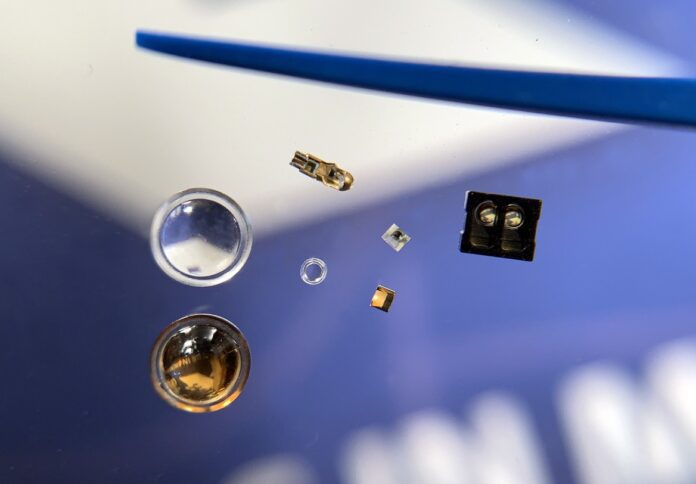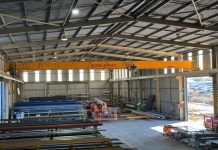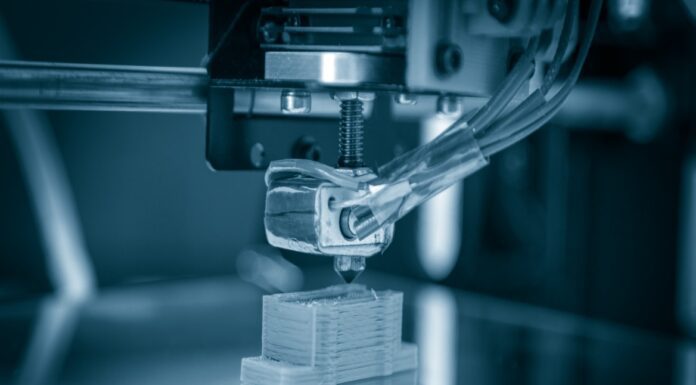
Article by Paul Runyan, VP Sales & Marketing, Accumold
Micro-optics encompasses components like tiny lenses, beam-splitters, prisms, light-pipes, and other optical parts ranging from 20 microns to 1 mm in size, or larger optical components with micron-level features.
These components drive the miniaturization trend in various light-involved applications, significantly cutting manufacturing costs.
They are integral in numerous applications, such as sensors, medical diagnostics, DataCom applications, fitness and medical diagnostic wearables, and emerging technologies like augmented reality glasses and contact lenses.
Precision in micro molding for micro-optics
The fabrication of micro-optic components demands an exceptional level of precision, which only the most experienced and specialized micro molding companies can provide. Achieving the exacting tolerances required for these delicate micro-optic parts necessitates a deep and specialized processing knowledge that is distinctly different from that used for typical mechanical parts. This advanced level of expertise is essential for maintaining the integrity and functionality of the micro-optic components.
Micro molders must adeptly handle and package extremely small parts, a process that presents unique and complex challenges. The precision involved in micro molding for optics is of such a high degree that even the slightest deviation can render a component ineffective or flawed. Therefore, the entire process, from the initial design and molding to the final handling and packaging, must be executed with meticulous care and attention to detail. This level of expertise ensures that the micro-optic components meet the stringent performance standards required for their application in various high-tech fields.
Custom molding machines for micro-optics
Standard molding machines often fall short in the production of micro-optics, necessitating custom solutions. Traditional molding machines are not designed to handle the precise and intricate requirements of micro-optic components, which can include extremely small and delicate structures.”
The surface relief features of diffractive optical elements (DOEs), which are essential in micro-optics, can range from a few hundred nanometers to a few micrometers. This level of precision is beyond the capabilities of standard molding machines, which are generally designed for larger, less intricate parts. Additionally, refractive micro lens arrays, another crucial component in the field of micro-optics, often measure less than 100 microns. Achieving such small dimensions with high accuracy and consistency demands specialized equipment and techniques that go beyond what standard molding machines can offer.
To address these challenges, companies like Accumold invest in the development and refinement of micro molding machines that can produce high-quality micro-optic parts. These machines are designed to maintain tight tolerances and ensure the precise replication of intricate surface features.
This capability is essential for the production of effective DOEs and refractive micro lens arrays, which are used in a variety of applications, including medical devices, consumer electronics, and advanced imaging systems. By utilizing custom micro molding machines, manufacturers can achieve the high level of precision and quality required for micro-optics, ensuring their products meet the demanding standards of the industry.
Design and development in micro-optic manufacturing
Using injection molding for micro-optic manufacture involves optimizing design, mastering, tooling, and production steps, requiring close collaboration between supplier and product developer. Success in micro-optics extends beyond the molding process itself, necessitating a vertically integrated micro molding company proficient in tooling, molding, validation, and automated assembly. Additionally, expertise in Design for Manufacturability (DfM) and Design for Micro Molding (DfMM) is crucial.
Micro molders often face challenges when customers present designs that are far from being producible. A proficient micro molder guides these customers toward a design that can be produced and scaled up. This process may involve simple drawing changes or a complete redesign using 3D solid modeling software. Early involvement in the design cycle is essential for optimizing the manufacturability of micro-optic components.
Collaboration and partnership in micro molding
Healthy and rewarding relationships between micro molders and their customers are founded on strong partnerships. This collaborative approach allows micro molders to impart specialist expertise and knowledge early in the design cycle and throughout development stages. Such partnerships have been instrumental in the success of companies like Accumold, which fosters long-term relationships rather than one-off projects.
The collaborative nature of the micro molding process means that successful outcomes are often the result of deep-rooted partnerships between the micro molder and the customer. This relationship allows for continuous improvement and innovation, ensuring that the final product meets the high standards required in micro-optic applications.
High stakes in micro-optic manufacturing
The micro-optic manufacturing sector is characterized by high costs and risks, with few qualified micro molders capable of meeting the necessary accuracy, timeframe, and cost-effectiveness. When selecting a micro molding partner, it is vital to ensure it has expert testing and quality assurance processes tailored to micro-optic fabrication. Companies must partner with firms that have a proven track record of meeting tight tolerances and exacting standards.
Micro-optic components often require unique testing and quality assurance processes to validate and assess lens profiles and surface finishes. These stringent requirements highlight the importance of choosing a partner with comprehensive in-house metrology tools and expertise in micro-optic fabrication.
Tooling and validation in micro molding
Tooling is a critical aspect of micro-optic device manufacturing. Micro molders must assist in the design, tooling, and production of various micro-optic devices, such as 250-micron fiber optic lenses, parallel array products, demux devices, and diffractive lenses. Expertise in molding attenuated resins and applying IR, anti-reflective (AR), and reflective coatings onto plastics is also essential.
Precise control of molding process parameters, especially shot size or resin volume, is crucial for maintaining accuracy and repeatability in micro-optics production. Automated, hands-free assembly processes are necessary to handle tiny and delicate components, ensuring orientation is maintained and parts are uncontaminated.
Advanced assembly techniques
Micro-optic applications often benefit from over-molding, reducing the complexity of assembly operations. A micro molder skilled in over-molding can significantly streamline the production process. When post-production assembly is required, dedicated work cells can handle the entire process from molding to final packaging, especially for high-volume projects.
Automated assembly processes are crucial in maintaining the integrity of micro-optic components. These processes minimize human error and contamination, ensuring that each part meets the required specifications. Over-molding techniques can further simplify assembly by integrating multiple functions into a single molded part, reducing the need for additional assembly steps.
Packaging solutions for micro-optics
Micro-optics typically cannot be bulk packaged, necessitating various packaging methods, the most common being custom thermoform trays and tape and reel. While low-volume projects can use hand-loaded trays, high-volume projects require automated inspection and placement into packaging to ensure efficiency and quality.
The delicate nature of micro-optic components means that specialized packaging solutions are necessary to protect them during transportation and storage. Custom packaging methods, such as thermoform trays, provide secure and organized storage, while automated systems ensure consistent quality and efficiency in high-volume production.
Conclusion
The production of micro-optics demands precision, expertise in tool construction, material selection, validation, automated assembly, and packaging. OEMs embarking on micro-optic projects must engage with experienced micro molding partners early in development to ensure accurate, timely, and cost-effective manufacturing solutions. The specialized nature of micro-optic components and the tight tolerances they require mean that only a few micro molders possess the necessary depth of experience and capability. By partnering with a qualified micro molder, OEMs can navigate the complex landscape of micro-optic manufacturing, ensuring success and innovation in their products.
The role of micro molding in the production of micro-optics is pivotal, encompassing every stage from design and development to final packaging. The intricate nature of these components requires a deep understanding of the specific challenges involved, making the selection of a skilled and experienced micro molder essential for achieving the desired outcomes in this highly specialized field.



















